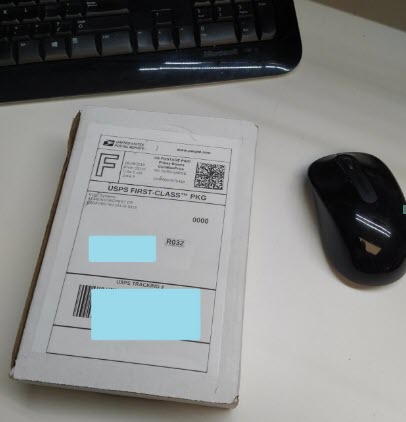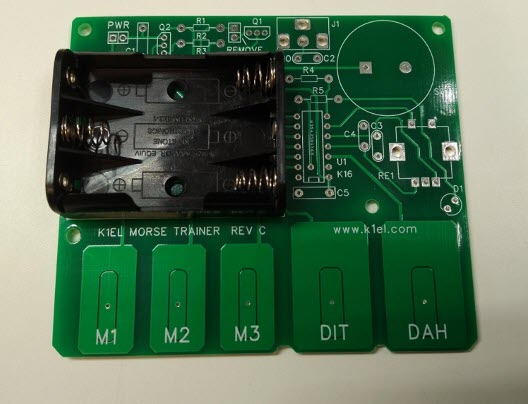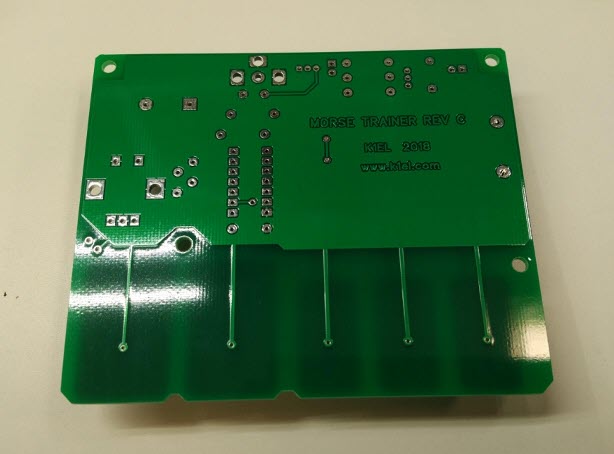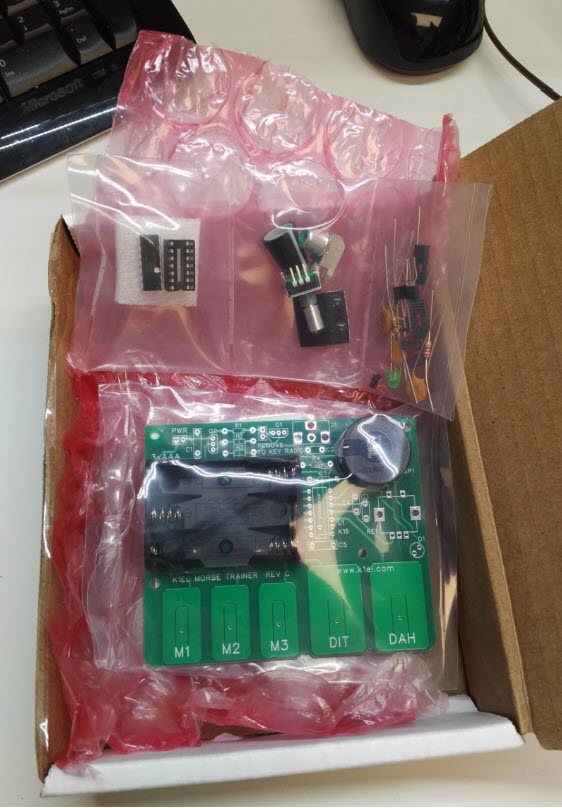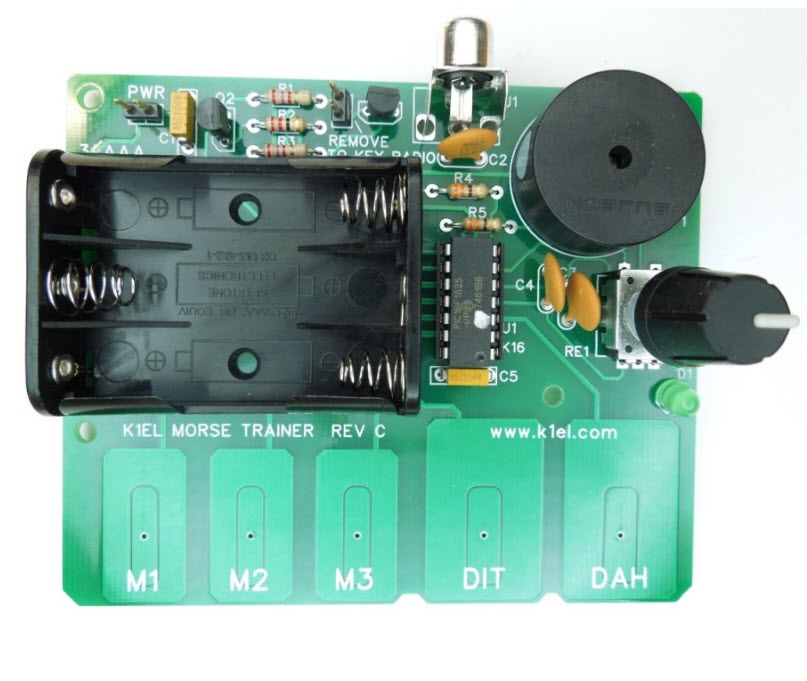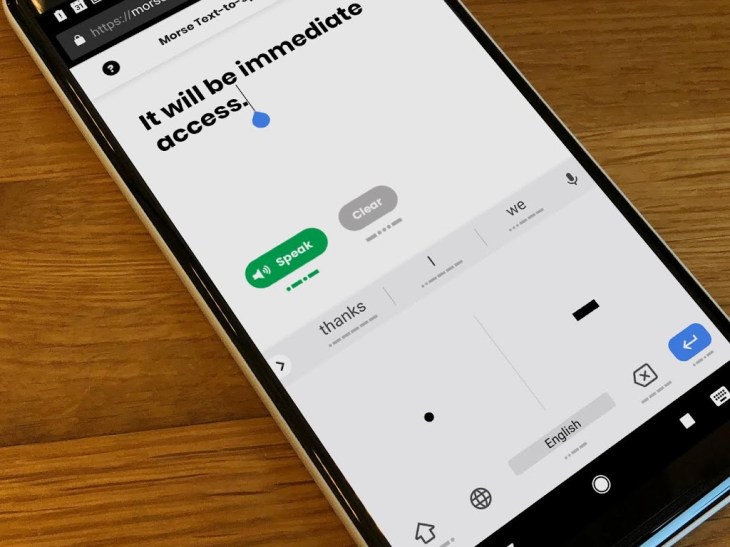by Steve, KZ1X
At the OCRA meeting (14 Oct 2019) there was a group build session for assembling the K1EL Morse Tutor kit club project.
Of the 25 or so kits involved in the project, approximately 6 were completed prior to the meeting! Those are our eager builders, and we’re lucky to have folks like that here to learn from. So few areas have such a rich experienced resource these days.
Another approximately 13 kits were assembled at the event.
More than a few assemblers were first-time kit builders, so, they get a special shout-out, as do the several experienced mentors present whose help was invaluable.
Since the success rate for the kits was effectively 100%, we can move to discussion of an evaluation of the event, and some next steps.
To start … It did seem like the participants were fully engaged and either re-learning their assembly skills, or experiencing them for the first time. This is certainly a good thing!
It would be great to get some additional and candid feedback on what went well – and what could be improved for some possible future event like this. Please feel free to share here or via direct email.
Now that many people have these kits built and operating, what comes next?
Several things, in fact, come next.
Immediately, please try and familiarize yourself with the settings on the Morse Trainer units you built. Pay particular attention to the setting that lets you control the sound pitch (tone) of the sending. You will want/need to be able to change this.
Also, work on learning TO CLEARLY SEND the first four letters of the lessons: E, T, A and N. Don’t worry about speed, it’s the smoothness that’s important to get down pat.
If you need to hear what these letters should sound like, I will be ‘playing’ them on the air, just after the ARES nets on Saturday mornings.
Lastly, don’t forget to remove the power jumper on your Morse Tutor when not in use, since the battery will drain if left on. That would take a month or two, but, no sense in running the batteries down for no reason. Simply unplug the jumper from the two pins and then re-seat it on just one, so you won’t lose it.
After that …
-
- The intent has been all along to offer weekly Morse tutoring lessons over-the-air via the 442.150 repeater … and in fact these were originally intended to start around now. There have been several setbacks to this plan, delaying the rollout by multiple weeks. I ask forbearance, all successful ventures take more time than originally anticipated.
- Group study events … did anyone notice the special feature of this kit, which allows people to pair-off and send Morse to each other in small group settings? The kits have a common RCA type jack on them, and with a simple phono male-male cable (which the club has several of if you don’t) they can be connected directly together! The MOST productive way to learn Morse is to first master a handful of characters (that is the purpose of the over-the-air sessions), make up words using just those letters, then send the code to a partner for practice. Then, reverse the listener and sender. These study events can be as few as two people, or up to MANY, and should take about 20 minutes each. The only catch is that there needs to be someplace people can go and have a quiet place for the study session. We’re spread over a very wide geographic area so this becomes challenging to manage. In an ideal world, we’d all have a weekly lesson session, and nobody would miss one. More realistically, those sincerely interested in learning the code can work with a buddy, perhaps one closer by than further, and help each other out getting to learn all 26 letters, ten digits, and a few punctuation and prosign characters.
- Computer aided training … there is Morse tutorial available called G4FON (the call sign UK ham who originally came up with it) and it’s available for PC, Mac, tablets, phones, you name it.In the next week or two I will send more information about this software and how to set it up to complement the coming training sessions.
For now… here are some links, see if you can install this software in your favorite device, and please report all successes or any gotchas:
http://www.g4fon.net/CW%20Trainer.htm for Windows
https://apps.apple.com/us/app/morse-elmer/id414371107 Apple iOS
https://play.google.com/store/apps/details?id=net.iz2uuf.cwkoch&hl=en_US Android OS
73
Steve KZ1X

